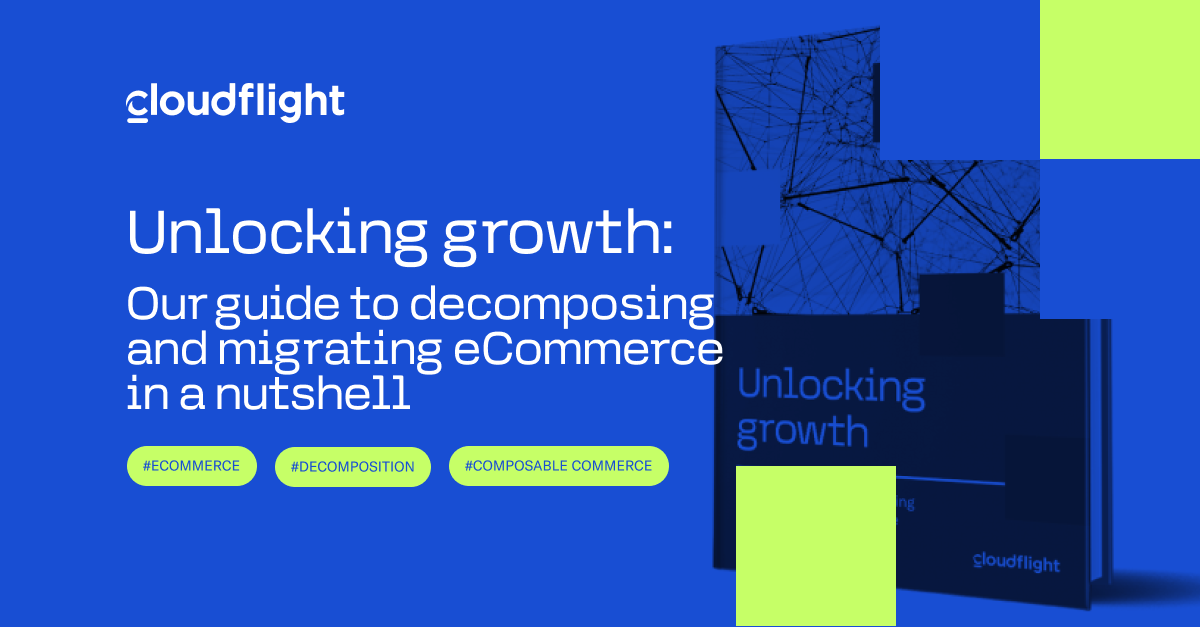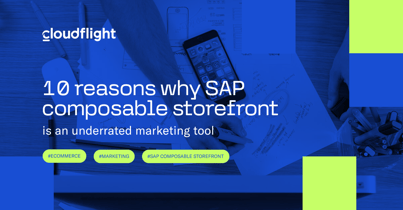Composable commerce allows you to build your optimal eCommerce system via replaceable components that deliver particular sets of features. Digital products that are the best tools for specific tasks are known as best-of-breed solutions. Your challenge is to identify and incorporate them into your eCommerce architecture.
At Divante, a global eCommerce solution partner, we've collaborated with countless vendors delivering over 1,400 eCommerce projects. And commercetools is an essential element of our composable commerce systems. If you want to find out how commercetools works, check our reference architecture for commercetools.
But now, let’s discuss how to find and evaluate composable commerce solutions. Here’s a roadmap to help you pick the right tech partner.

How to build a shortlist of eCommerce tech vendors
There are plenty of places online where you can elevate your tech and market knowledge.
1. How to compare technologies
When it comes to composable commerce, anything that has to do with a MACH (Microservices-based, API-first, Cloud-native and Headless) stack is what you should be looking for. MACH provides a suite of architectural features that allows you to build a composable system.
Investing in technology is like investing in anything else — you can take a risky shot or pick a well-established solution. The eCommerce technologies you encounter can be in various stages of growth, from sprouting, to widely adopted, to fading away. If you choose a niche solution that doesn’t grow and get stuck with it, you risk a vendor lock-in that will limit your choices and raise costs.
Here are a couple of reliable sources to assess what’s happening in the market right now:
-
Gartner’s Magic Quadrant has proven to be a useful tool for comparing software solutions. We use it to analyze what to invest in at Divante. Beware of certain limitations, as the results might vary per region.
-
You can find plenty of research papers on technologies and trends, such as McKinsey Technology Trends Outlook, Tech Trends by Deloitte and Technology Innovation Report by Accenture.
-
eBook and guides. Check out our library of eBooks exploring eCommerce technologies. The best one to start your composable commerce journey will be our reference architecture for commercetools.
2. Where to find tech partners for eCommerce projects
Now that you have an idea of what's in your corner of the market, take a look at potential companies and create a shortlist. Here are the sources we recommend:
-
Recommendations: People you trust can provide the inside scoop on potential tech partners. You can reach out to contacts with whom you already have a relationship or simply post a question on LinkedIn to collect initial recommendations.
-
Clutch.co: This is a legit source of information, but there’s a catch. When you enter a list of companies in the chosen category, they are sorted by default by their sponsorship level. If you want a more accurate ranking, sort the results by Clutch rank.
-
Marketplaces: Commerce vendors often have an ecosystem of trusted vendors. The commercetools Integration Marketplace, for example, lists highly vetted third-party integrations and extensions that are easy to integrate into commercetools eCommerce systems.
How to pick the best-of-breed eCommerce solution
Now that you have your shortlist with technologies and a couple of matching companies, it’s time to evaluate the best partner for you. There are a few areas to look at during your tech vendor check-up.
How to evaluate a tech vendor
To find the ideal vendor, you have to start with your needs. Create a rough sketch of what you’re trying to achieve. Consider hiring a consultant if you’re not a tech person and your company lacks these competencies. Alternatively, talk to tech vendors directly, and they’ll organize product design workshops to help you define your goals.
Tech stack synergy
Take a look at the vendor's supported technologies, platforms and services. If you’re aiming for composable commerce, your vendor has to meet certain criteria to integrate with your system. MACH architecture is your friend here. An ideal vendor uses technologies compatible with what your company already has built and those that you might like to look into in the future.
Case studies and customers check
Case studies will be your strongest ally when looking for a tech partner, especially those with hard metrics. If you see a competitor’s name in there, you can compare those results to your own to calculate the ROI. It’s worth your while to verify those case studies. Simply reach out to the quoted customers to see if they recommend the company.
Workflow compatibility
Make sure that you’re on the same page when it comes to project management. It’s not only waterfall vs. agile. The development processes may vary, and the more people from your in-house development team are involved, the bigger the compatibility issues may be.
Background and legal compliance check
Of course, picking a tech partner doesn’t require due diligence, but we recommend caution. It’s also good to address the legal issues early, as they may cause you to cross some vendors off your list. The main issues might be connected with General Data Protection Regulation data processing, the Know Your Business process and ISO certification requirements.
What’s next?
At this point, your shortlist should contain at most four or five companies. It’s time to talk to them.
There’s no one-fit-all solution, and finding a perfect match isn’t always easy. That’s where composable commerce comes in handy. It allows you to juggle multiple tools to smoothly compose your IT system, stay flexible and avoid vendor lock-in. Suppose you move on to another solution that emerges as a better option at any time down the line. In that case, you’ll be able to do so without considerable investments in custom development. It will be a smooth process.
If you want to see how to compose your commerce system, check out our reference architecture for commercetools. It’s a blueprint that presents some best-of-breed solutions and a way to connect them to build an efficient and scalable system. Of course, if you need expertise at any point, you can use help from an agency like Divante — we're always happy to help.
Published November 30, 2022



![Reference architecture for commercetools - big [alt]](https://no-cache.hubspot.com/cta/default/4169016/5d7f9c7e-0d86-4f7e-a501-2e99e4d935e4.png)








